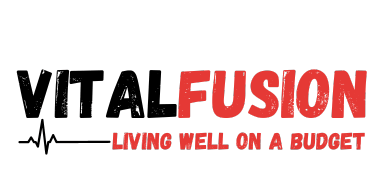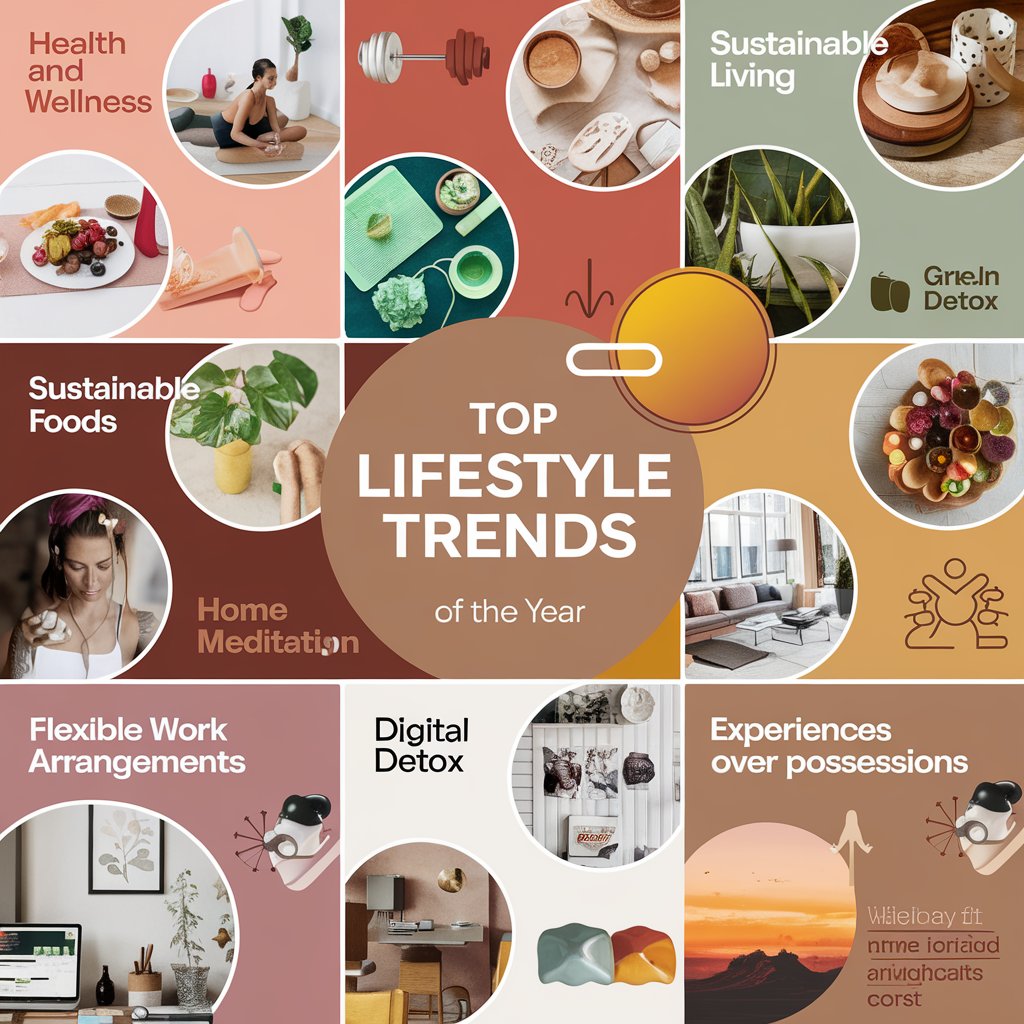Table of Contents
The Top 5 Lifestyle Trends of the Year: A Comprehensive Analysis
The world is constantly evolving, and lifestyle trends reflect our changing priorities and values. This year, several key trends have emerged that resonate with individuals seeking a more balanced, fulfilling life. Here’s a detailed look at the top five lifestyle trends that you should know about.
1. Health and Wellness Focus
More than ever, people are prioritizing their health and wellness. This trend encompasses physical fitness, mental well-being, and overall holistic health. With the rise of remote work and the pandemic’s effects still lingering, many are looking for ways to boost immunity and reduce stress.
- Mental Health Apps: Users are engaging with apps that promote mindfulness, meditation, and stress relief. Solutions like Headspace and Calm are becoming staples in daily routines.
- Home Workouts: With gyms reopening, many are choosing to combine home workouts with gym visits. The convenience of platforms like Peloton and YouTube workouts allows for flexibility.
2. Sustainable Living
As climate change becomes a pressing concern, sustainable living is gaining traction. People are becoming more conscious about their ecological footprint, leading to lifestyle changes that benefit the planet.
- Zero Waste Movement: This encourages individuals to reduce waste through reusable containers and shopping strategies that minimize packaging.
- Plant-Based Diets: Many are transitioning to vegetarian or vegan diets, drawn by health benefits and environmental impact.
3. Digital Detox
In our hyper-connected world, the need for a digital detox has become crucial. Many individuals are recognizing the negative impacts of excessive screen time on their mental health and relationships. This trend focuses on disconnecting to reconnect with oneself and others.
- Scheduled Screen-Free Hours: Setting aside specific times to unplug from devices helps in fostering real-life connections.
- Mindful Social Media Use: People are being selective about their social media intake, which encourages more meaningful online interactions.
4. Flexible Work Arrangements
The shift toward flexible work is becoming a permanent fixture in many industries. With the pandemic highlighting the benefits of remote work, employees are looking for arrangements that best suit their lifestyles.
- Hybrid Models: Companies are adopting hybrid work models, allowing employees to work both remotely and in the office.
- Work-Life Balance: Many are prioritizing jobs with flexible hours to better manage personal and professional commitments.
5. Experiences Over Possessions
As consumers face a saturated market filled with material goods, there’s been a notable shift towards valuing experiences over possessions. This trend is about creating memories rather than accumulating items.
- Travel Experiences: People are investing in travel, whether it’s exploring nearby towns or embarking on international adventures.
- Hobby Classes: Enrolling in classes for cooking, painting, or dancing allows individuals to learn new skills and meet new people, providing joy and satisfaction.
These lifestyle trends reflect deeper societal changes and the collective pursuit of well-being and connection. They call on individuals not only to improve their own lives but also contribute positively to the world around them. By staying aware of these trends, you can better adapt and enrich your own life experience.
These lifestyle trends signify a shift in how we view health, work, and personal fulfillment. Whether it’s adopting sustainable practices, exploring the joys of mindful living, or embracing flexible work, these changes can lead to a more enriching and fulfilling life.
Stay tuned as you explore these trends and consider integrating them into your daily routine for a more balanced lifestyle.
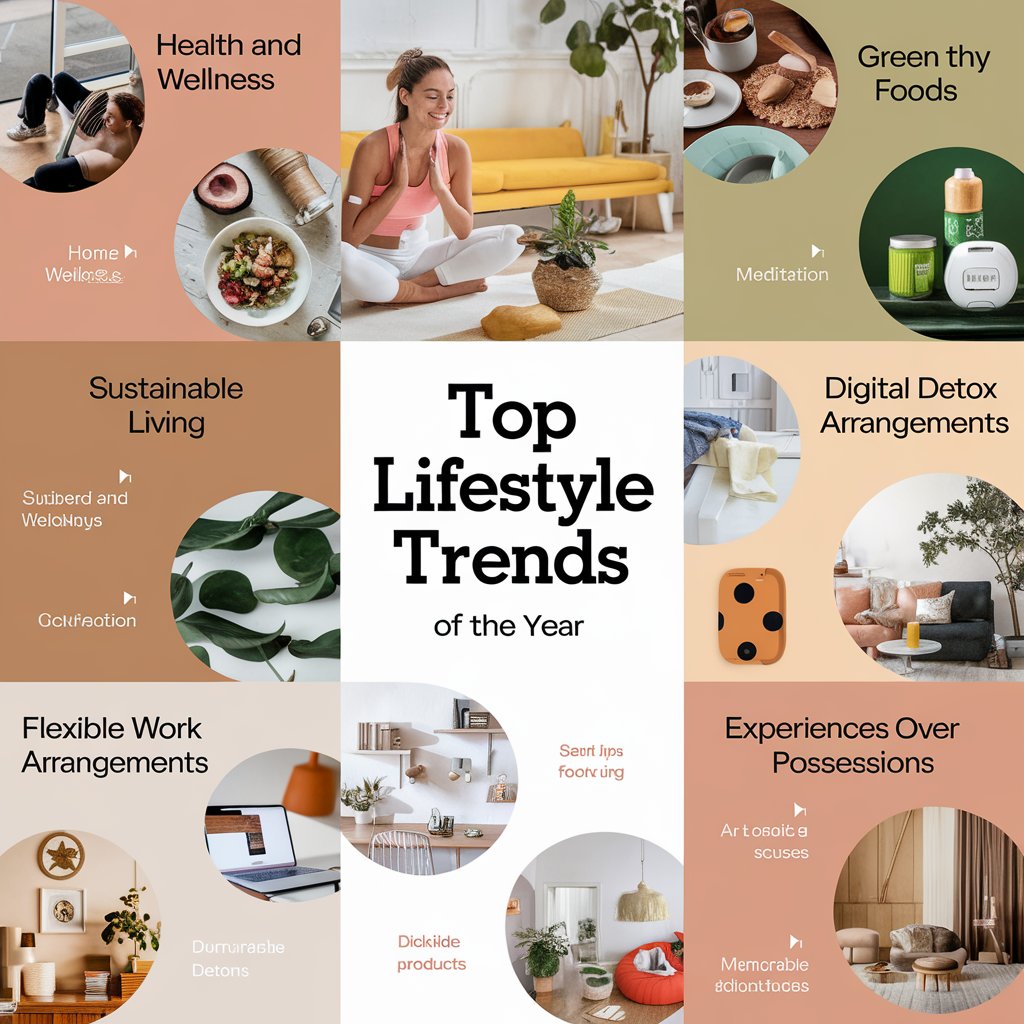
Sustainable Living: How Eco-Conscious Choices are Shaping Your Daily Routine
In recent years, the rise of sustainable living has become more than just a fad; it has morphed into a significant lifestyle movement. Eco-conscious choices have infiltrated our daily routines, influencing everything from the products we purchase to the way we consume. Here’s how adopting sustainable practices can positively shape your everyday life.
Understanding Sustainable Living
Sustainable living focuses on reducing a person’s or society’s use of the Earth’s natural resources. This approach doesn’t just benefit the environment; it adds value to your life in numerous ways. By making sustainable choices, you become part of a movement that emphasizes health, community, and future generations.
Why Choose Eco-Conscious Options?
Making eco-conscious choices leads to various benefits:
- Healthier Lifestyle: Many eco-friendly products are free from harmful chemicals and toxins.
- Cost Savings: Investing in energy-efficient appliances or reducing waste can save you money in the long run.
- Community Connection: Local markets that prioritize sustainable practices often foster a sense of community among consumers.
- Boosting Creativity: Finding innovative ways to repurpose items can add a personal touch to your home.
Practical Steps to Implement Eco-Conscious Choices
Adopting a sustainable lifestyle can seem daunting, but small changes can lead to significant impacts. Here are some practical steps you can take:
1. Rethink Your Shopping Habits
Choose products with minimal packaging or that are made from recycled materials. Whenever possible, support local businesses that source their goods sustainably.
2. Embrace Plant-Based Meals
Cutting back on meat and dairy is one of the most impactful changes you can make. Plant-based diets not only reduce carbon footprints but offer numerous health benefits, too. Try to incorporate more fruits, vegetables, legumes, and grains into your meals.
3. Reduce, Reuse, Recycle
This old mantra is as relevant as ever. Start by reducing single-use plastics, reusing containers, and recycling whenever possible. Familiarize yourself with local recycling guidelines to ensure that you’re disposing of waste correctly.
4. Opt for Energy Efficiency
Switching to energy-efficient appliances and using LED light bulbs can cut down on energy use. Additionally, unplugging devices when they’re not in use minimizes phantom power loss.
5. Cultivate a Green Space
Whether it’s a small herb garden on your kitchen windowsill or a backyard vegetable patch, growing your own plants can be incredibly rewarding. This practice not only reduces your carbon footprint but connects you with nature.
Mindful Lifestyle Choices
Being eco-conscious isn’t just limited to tangible actions; it’s also about adopting a mindset. Here’s how to cultivate mindfulness in your daily routine:
- Practice Conscious Consumption: Before making a purchase, ask yourself if it’s a need or a want. This simple practice can help you avoid impulse buying.
- Be Aware of Your Energy Usage: Keep track of how much energy you consume daily, and challenge yourself to find ways to reduce it.
- Get Involved: Participate in local environmental initiatives or volunteer for clean-up drives. Being part of a community with similar values can enhance your commitment to sustainable living.
The Ripple Effect of Eco-Conscious Choices
Each sustainable choice you make can inspire others to do the same. Whether it’s sharing a plant-based recipe or showcasing your zero-waste habits on social media, you can encourage friends and family to join you on this eco-friendly journey. The small changes you implement in your life can create a ripple effect, contributing to a global movement towards sustainability.
As the impact of human life on the planet continues to increase, adopting eco-conscious habits now is crucial. The sooner you start, the bigger the change you’ll see not only in your life but also in your community and the planet. Remember, each step counts, and your efforts matter!
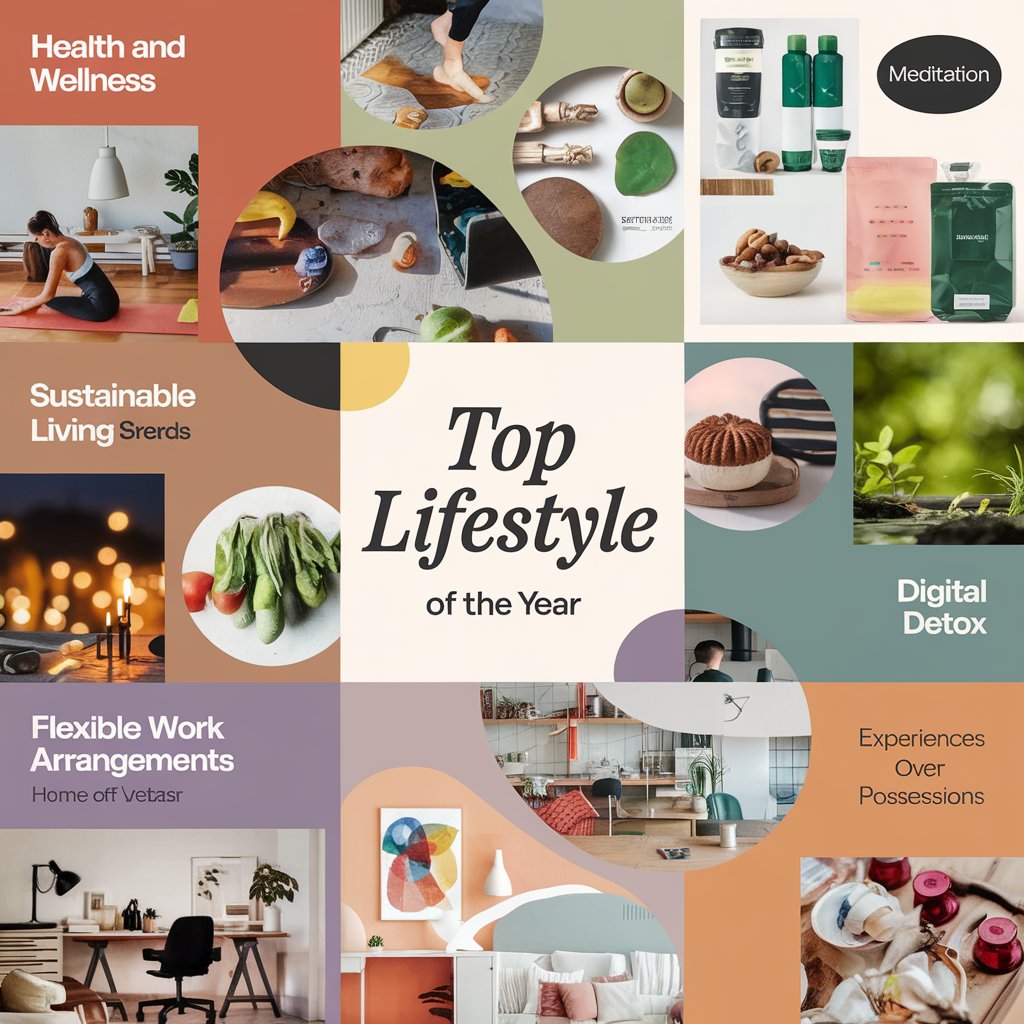
The Rise of Minimalism: Embracing Less for a Better Life
The modern world often bombards us with choices and possessions, leaving many feeling overwhelmed. This has led to a significant change in how people approach their lives and spaces, especially regarding material possessions. Embracing minimalism has emerged as a powerful response to the chaos of consumerism. More individuals are prioritizing experiences over things, choosing quality over quantity, and shifting toward a lifestyle that focuses on intentional living.
The Core Principles of Minimalism
To truly embrace minimalism, it’s essential to understand its core principles. By considering these ideas, you can simplify your life and enhance your overall well-being:
- Less is More: Minimalism teaches that having fewer items can lead to more freedom and clarity. By downsizing your possessions, you can create a more peaceful environment.
- Intentional Living: Every item you own should serve a purpose or spark joy. This mindset encourages you to be more mindful about what you invite into your life.
- Focus on Experiences: Prioritizing experiences over physical objects leads to more fulfilling memories and personal growth. Travel, hobbies, and relationships become more central.
- Declutter Regularly: Make decluttering a habit rather than a one-time task. Schedule regular intervals to evaluate what you truly need.
- Mindfulness: Emphasize being present in the moment. Minimalism is as much about the mental and emotional decluttering as it is about physical items.
How to Begin Your Minimalist Journey
Starting your minimalist journey might feel daunting, but taking small steps can lead to significant changes. Here are some practical strategies to help you begin:
- Start Small: Choose one area of your home, like a drawer or a closet, to declutter. Find items you no longer need or use and donate or discard them.
- Set Clear Goals: Define what minimalism looks like for you. Are you looking to live in a smaller space or to simplify your daily routine? Establish clear objectives to measure progress.
- Digital Decluttering: Don’t forget the digital space. Remove unused apps, sort through files, and manage your email to reduce digital noise.
- Invest in Quality: When you do decide to purchase something new, choose high-quality items that will last, rather than cheap goods that may lead to clutter.
- Practice Gratitude: Focusing on what you have rather than what you lack helps ground your minimalist practice. Appreciating the essential aspects of your life fosters contentment.
Benefits of Embracing Minimalism
The benefits of adopting a minimalist lifestyle can significantly impact your mental, emotional, and even physical well-being. Some key advantages include:
- Reduced Stress: A cluttered space can lead to a cluttered mind. Minimalism helps create a calming environment, promoting clarity and reducing anxiety.
- Financial Freedom: Spending less on material items allows for more savings and financial security. With fewer things to buy, you can allocate funds toward experiences or greater investments.
- Improved Focus: By reducing distractions, you can concentrate better on tasks and foster productivity. Less clutter leads to a clear mind.
- Stronger Relationships: Emphasizing experiences over possessions allows you to spend more time with loved ones, creating meaningful connections.
- Environmental Awareness: Minimalism promotes sustainable living by encouraging fewer purchases and waste, thus benefiting the planet.
The Future of Minimalism
As the world continues to evolve, minimalism remains a relevant life choice. With an increasing awareness of mental health and sustainability, more people are drawn to its principles. The movement offers a refreshing perspective, allowing for rejuvenation in a society that often prioritizes materialism.
Embracing minimalism is about finding freedom in less, cultivating satisfaction with simplicity, and living a life that aligns with personal values. In this fast-paced world, discovering the value of minimalism can lead to deeper fulfillment and a better quality of life.
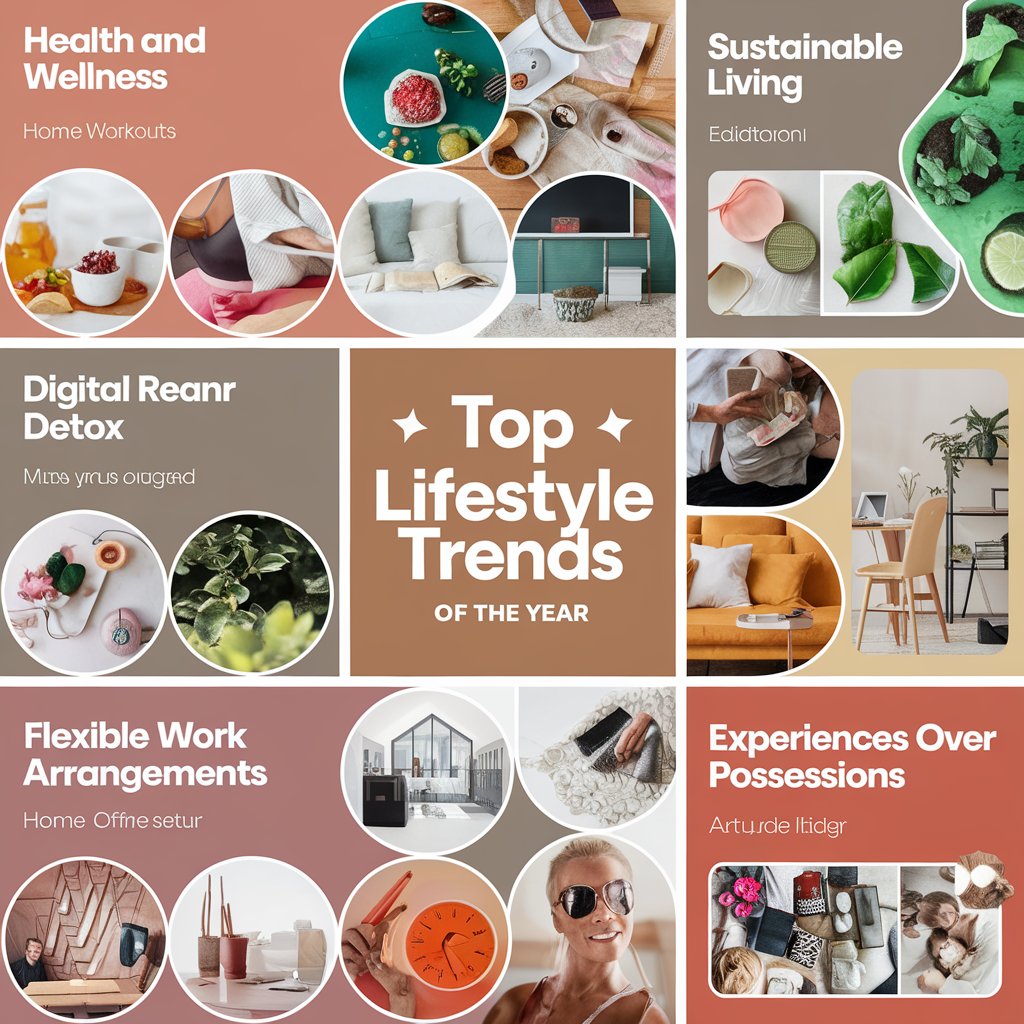
Digital Detox: Finding Balance in a Tech-Driven World
In today’s fast-paced world, where technology rules our lives, many people are beginning to feel overwhelmed. It’s easy to spend hours on social media or glued to our screens, often at the cost of our mental and physical well-being. A digital detox is becoming increasingly popular as a way to find balance and reconnect with ourselves and our surroundings.
A successful digital detox doesn’t have to mean cutting out technology entirely. Instead, it’s about setting boundaries and being mindful of our tech usage. Here are some effective strategies to help you achieve that balance:
Evaluate Your Screen Time
Before you can detox, understanding your habits is crucial. Take a week to track how much time you spend on various devices and apps. You may be surprised at the results! Here are some questions to consider:
- What apps do you use most frequently?
- Are you using your phone for productive tasks or mindless scrolling?
- How often do you check your devices each day?
Set Specific Goals
Once you understand your screen time, it’s time to set realistic goals for your digital detox. A few ideas include:
- Limit your social media use to 30 minutes a day.
- Designate tech-free zones in your home, like the bedroom or dining room.
- Replace one hour of screen time with a productive hobbies, such as reading or exercising.
Use Technology Mindfully
Instead of avoiding technology entirely, consider how you can use it more mindfully. This might mean prioritizing apps that enrich your life, such as productivity tools or educational platforms. Here’s how to be more intentional:
- Schedule specific times during the day to check emails or social media.
- Unsubscribe from unnecessary notifications that create distractions.
- Utilize tools that promote focus and reduce distractions, like website blockers or distraction-free writing apps.
Incorporate Offline Activities
Filling your day with offline alternatives can ease the urge to reach for your phone. It’s essential to rediscover hobbies that bring you joy and fulfillment. Some alternatives include:
- Going for a nature walk or hike.
- Joining a local sports team or yoga class.
- Engaging in creative activities like painting, knitting, or writing in a journal.
Connect with Others
It’s easy to forget the value of face-to-face interactions when we’re so glued to our screens. Building real-life connections can enhance your overall well-being. Consider these social strategies:
- Host a game night or dinner party with friends and family.
- Join clubs or groups that share your interests.
- Participate in community volunteer opportunities.
Remember, the aim of a digital detox is not simply to eliminate technology but to achieve a balanced relationship with it. Adjusting your outlook on tech can lead to significant improvements in your mental health and overall quality of life. By being more mindful about how you use technology, you open yourself to richer experiences and deeper connections.
In a society where digital overload is common, taking breaks and setting boundaries is essential. A digital detox allows you to reset your mind, improve your focus, and forge genuine relationships, ultimately helping you thrive in a tech-driven world. As you embark on your journey to find balance, always remember to be patient with yourself; changes take time, but the benefits are well worth the effort.
So why not start your digital detox today? Reflect on your tech habits, implement your personalized plan, and watch as your life transforms for the better—one mindful moment at a time!
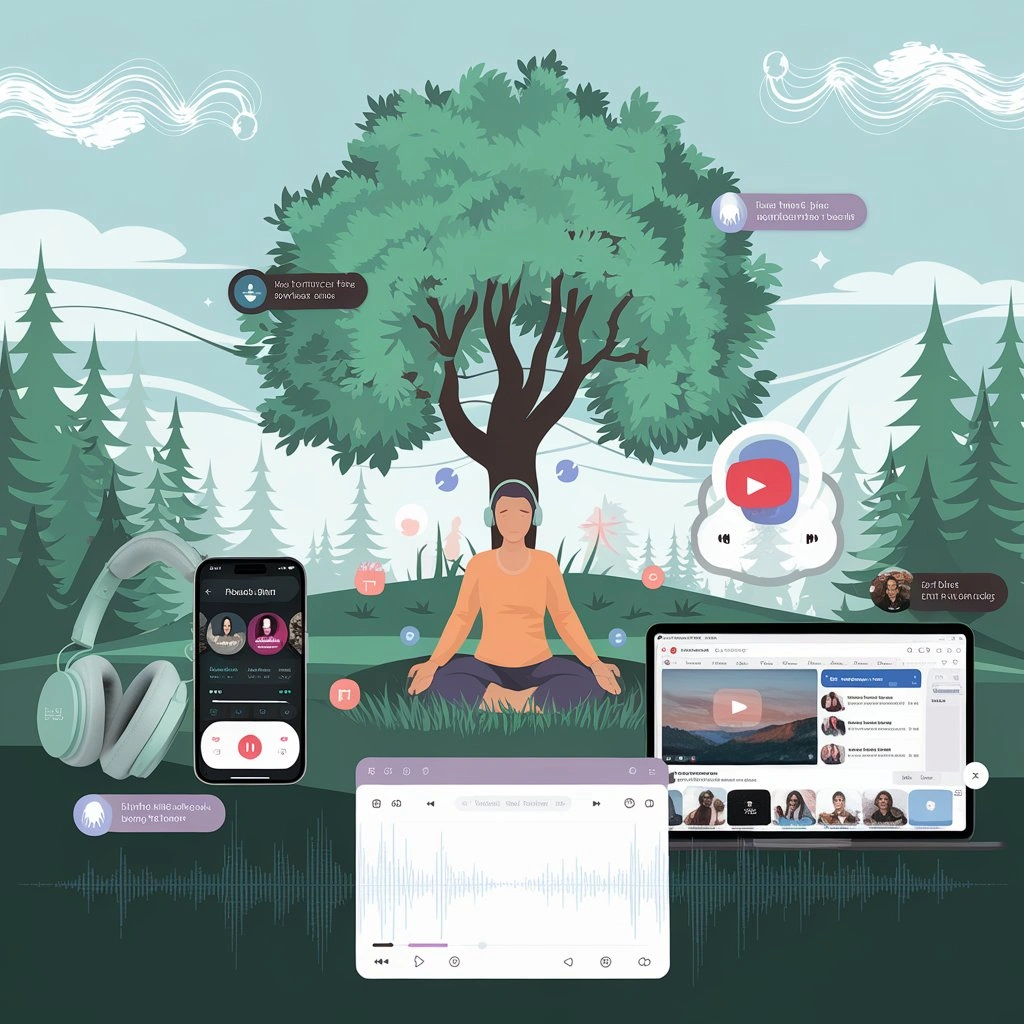
Wellness Trends: Exploring New Approaches to Mental and Physical Health
The journey towards better mental and physical health is evolving, with a strong focus on holistic wellness trends that emphasize mindfulness, connection, and innovative practices. In today’s fast-paced world, it’s vital to explore these trends to enhance overall well-being. Here’s a look at some of the most exciting approaches shaping the wellness landscape.
Mindfulness and Meditation
Mindfulness has become a buzzword in the wellness community. It encourages individuals to stay present and engaged in the moment. By incorporating mindfulness and meditation into daily routines, people can improve their mental health and reduce stress. Some effective practices you can try include:
- Guided Meditations: Many apps offer guided sessions that can help you stay focused.
- Breathwork: Simple breathing techniques can lower anxiety levels and enhance focus.
- Mindful Walking: Go for a walk while focusing on your surroundings to ground your thoughts.
By integrating these practices, you can build resilience and a more positive mindset.
Nutritional Psychology
Your diet plays a significant role in your mental health. Nutritional psychology explores how food impacts our mood and cognitive function. This trend encourages the consumption of foods that promote brain health, leading to improved mental clarity and emotional balance. Key components include:
- Omega-3 Fatty Acids: Found in fish and flaxseeds, these nutrients can support brain function.
- Antioxidants: Foods like berries and dark chocolate can help combat oxidative stress that affects mental well-being.
- Fermented Foods: Probiotics found in yogurt and fermented vegetables contribute not only to gut health but also to mental health via the gut-brain connection.
Being mindful of what you eat can significantly impact your mental and emotional states.
Movement and Movement Therapy
Exercise has long been known to invigorate the body, but recent trends highlight movement therapy as an essential component of the wellness journey. This approach goes beyond traditional workouts. It focuses on how movement can be therapeutic for both the body and mind. Here are some exciting ways to get moving:
- Dance Therapy: Expressing yourself through dance not only improves physical health but also boosts mood and reduces anxiety.
- Yoga: yoga practices that center on the breath can foster deeper connections to your body and mind.
- Nature Activities: Engaging in outdoor activities like hiking or tai chi promotes mental clarity while providing the health benefits of exercise.
Consider integrating these forms of movement into your routine. They can be both enjoyable and restorative.
Digital Detox and Tech Mindfulness
In a world overwhelmed by digital distractions, the trend toward a digital detox is gaining traction. Taking breaks from screens allows you to reconnect with yourself and with those around you. Tech mindfulness encourages conscious usage of technology. Here are some practical steps:
- Set Boundaries: Allocate specific times during the day to check your devices.
- Unplug Before Bed: Reducing screen time before sleep can improve your sleeping patterns.
- Engage in Offline Activities: Spend time reading, crafting, or enjoying nature to refresh your mind.
Embracing a digital detox can lead to better focus, improved relationships, and enhanced overall health.
Community and Connection
Emotional well-being is linked closely to social interactions. In these times, building supportive communities can significantly enhance mental health. Engaging with like-minded individuals fosters a sense of belonging and strengthens emotional resilience. Consider:
- Participating in Group Activities: Joining exercise classes or community events can help you meet new people.
- Volunteering: Helping others can boost your happiness and sense of purpose.
- Online Support Groups: In the digital era, many platforms offer ways to connect with others who share similar interests or struggles.
The significance of human connection cannot be understated. It’s crucial for both mental and physical health, allowing individuals to feel supported and understood.
As life continuously evolves, so too does our understanding of wellness. By embracing these trends, you can take proactive steps in enhancing your mental and physical health, tailored to your personal needs. Explore what resonates with you, and embark on your wellness journey with an open heart and mind.
Conclusion
As we navigate through the intricacies of modern life, the top lifestyle trends of the year reveal a profound shift in how we approach our well-being and the world around us. Sustainable living stands at the forefront, emphasizing the importance of making eco-conscious choices that not only benefit our health but also protect our planet. By embracing practices such as reducing waste and prioritizing renewable resources, you can play an essential role in fostering a more sustainable future.
The minimalist movement continues to gain traction, encouraging individuals to declutter both their physical spaces and their minds. By valuing experiences over possessions, many are finding greater happiness and fulfillment, showcasing how less can indeed be more. This mindset helps you focus on what truly matters, driving increased happiness and a sense of peace.
In this tech-driven era, the need for a digital detox has never been more relevant. Establishing healthier boundaries with technology allows you to create a balanced lifestyle. Finding time to disconnect enhances your mental clarity and improves your personal relationships.
Furthermore, the rise of new wellness trends emphasizes a holistic approach to both mental and physical health. From mindfulness practices to alternative therapies, these approaches encourage a well-rounded and personalized path to well-being.
In embracing these top lifestyle trends, you empower yourself to live a more meaningful, connected, and fulfilling life. By incorporating these shifts into your daily routine, you foster not only your personal growth but contribute positively to society as a whole. The future looks bright as we collectively move towards healthier, happier, and more sustainable living.
